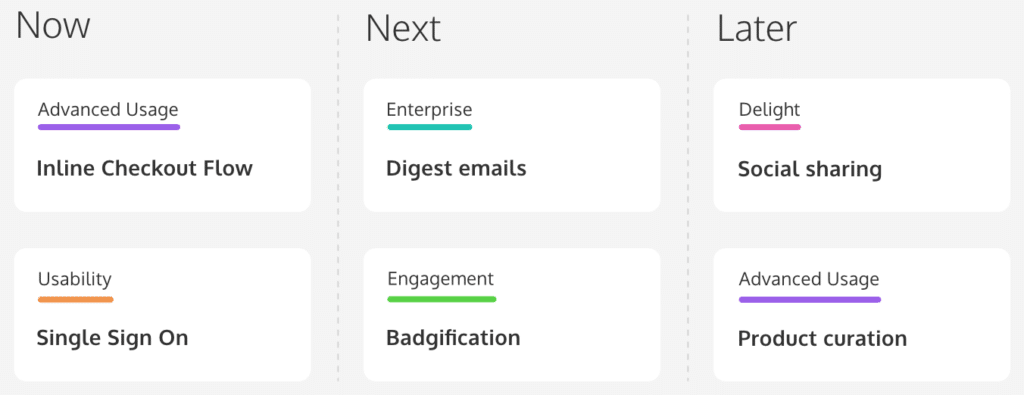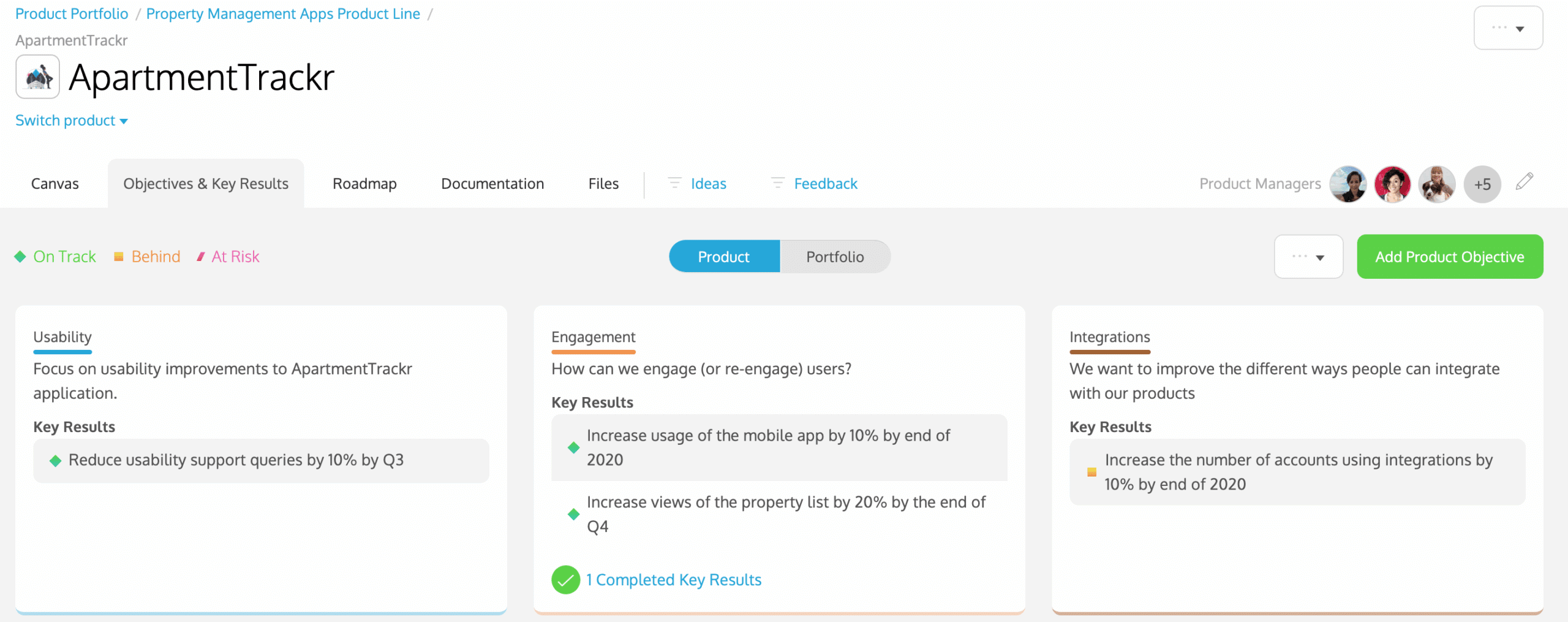The Path to Becoming a Better Product Manager
A product manager’s role (especially for those new to an organization) is never straightforward or simple. It’s a role that means you have to constantly juggle multiple contexts, deal with different personalities and maturity across teams, and understand and assimilate so many different things just to keep your head above water. It’s therefore hugely encouraging to see that so many product people consistently self-evaluate and seek continuous improvement so that they can become better product managers.
Move along the spectrum to becoming a better product manager
You can’t become an outstanding product manager overnight, but becoming one is almost always obtainable – as long as you understand your goal and take incremental steps to improve in order to get there. These steps include continuous learning, iterative improvements, and applying a product mindset in more and more situations before you get to an “ideal state”. Moving along the spectrum is important; there are principles and strategies you can adopt now and gradually feed into your own workload, without having to make any drastic changes or relying on huge organizational shifts in entrenched processes.
Teresa Torres uses recommendations for continuous discovery to illustrate what this spectrum of improvement might look like in a product person’s day-to-day work. In an ideal world, she recommends a product manager talks to customers at least once a week. This might seem overwhelming, especially if your week is already bursting with meetings. But if you’re striving to improve your work, then gradually increasing the amount of time spent with customers so you speak to them a couple of times a quarter is a valuable step in the right direction. Then move this to a few times a month and eventually you’ll be speaking to customers every week. By shifting carefully along this spectrum and taking a methodical approach, you can achieve your objective.
Move to the next level with ProdPad’s help
Supporting you as product managers to be the best you can be, both as individuals and within your organization, is integral to ProdPad’s ideology. We provide you with the tools you need to push towards success. I’ve broken down how ProdPad helps you to transform into the type of product manager who consistently and effectively manages products that generate positive outcomes for both your customers and your business.
Move from opinion-based decisions to customer-based decisions
Innovation expert Steve Blank highlights the importance of customer-based decision making by saying: “No facts exist inside the building, only opinions.” You need to listen to what your customers are experiencing by collecting feedback on your product. Don’t rely on what you or your key stakeholders think when you have a catalog of customer perspectives and needs at your fingertips. Without customer validation, how do you know how your product is holding up? Is it truly solving customer problems? Without a customer-centric approach, you will build stuff that you think your customers want instead of what they actually need, resulting in mountains of tech debt and wasted development costs.
With ProdPad, you can easily link ideas and feedback together to ensure the right decisions are made.
Embrace time horizons and ditch timeline roadmaps
We’ve said this time and again at ProdPad – remember when our CEO, Janna Bastow, did a thing on Twitter? – but a roadmap full of dates will not do you or the product team any favors. I appreciate that a shift from deadlines and features to time horizons and themes won’t happen overnight, so why not start by setting work to be completed by each quarter, and then gradually phase out time restraints altogether? Fortunately, it’s still possible to show time on ProdPad’s lean, outcome-focused roadmap so you can emphasize the problems being solved both now (with more detail and certainty) and in the future (with less detail and certainty).

Measure success based on impact and outcomes rather than features
Considerably more important than the number of features your team ships each development cycle is the impact those features have on your customers and the outcomes they help to generate. Josh Seiden defines an outcome as “a change in human behavior that drives business results”. Rather than adopt a “feature factory” approach whose primary goal is to churn out as many features as possible (with questionable assumptions about their ultimate value), ask yourself what problem you’re trying to solve and how confident you are that the delivered feature will solve it. Adopting this mindset means you’ll become more focused on prioritizing work that is valuable and worthwhile. ProdPad’s Ideas feature allows product people to chart all ideas on an Impact vs Effort matrix to aid in relative prioritization of those ideas.

Be transparent with your organization as well as with your customers
Your organization needs to know what you’re working on and the outcomes you’ve generated. Stakeholders need to see that the strategy is being executed, the sales team needs an idea of what features are coming out soon, but you should also make sure you’re transparent with your customer base. Let them know you’re listening: tell them when you’re working on solutions to their problem or when you’ve released something that addresses feedback they’ve given you. In ProdPad you can create multiple versions of your roadmap, tailored to each of your different audiences and with appropriate levels of detail for each, which is perfect for transparency, visibility, and gathering input on features under consideration.
Learn from the functionality you’ve just released
I’ve seen too many product roadmaps that end once the code for a feature gets pushed to production. A product manager’s job shouldn’t simply stop once something has been released. It’s critical to learn from the freshly released functionality so you can iterate and improve accordingly. When crafting an initial idea and building it out for development, make it a practice to predefine a set of success criteria and how you might measure them so you can easily determine whether it achieved the desired outcomes. Start documenting these outcomes so you and others on your team can incorporate what you learn into future work. It’s these learnings that may go on to shape, or even adapt, the rest of your product strategy. The completed roadmap cards in ProdPad contain fields for tracking how well the shipped ideas met the desired objectives.

Consider both business and customer outcomes
It’s all about striking a balance. Of course your customers need to be at the forefront of your product strategy, they are the ones for whom you need to deliver value. But a great product manager is able to ensure that they’re aligned with the rest of the organization and working towards the same objectives. In ProdPad, user outcomes are incorporated by tying customer feedback and problems to the ideas making up every product initiative. Additionally, ProdPad has an Objectives and Key Results (OKRs) feature to ensure that the desired outcomes (both business and customer) are identified and to measure progress towards those objectives facilitated by the relevant initiatives.
Signing up for a free ProdPad trial will allow you to take your product management game to the next level by incrementally, or even significantly, improving on a regular basis. Remember to refer back to this blog post and consider how each point can be applied to your current context in our awesome product management tool – you’ll go from good to amazing in no time at all. Good luck.